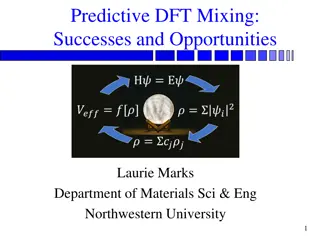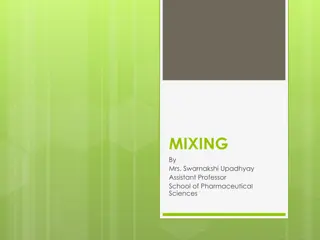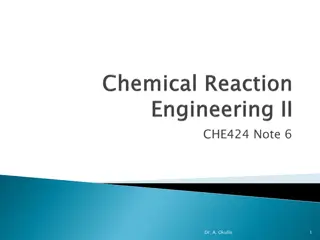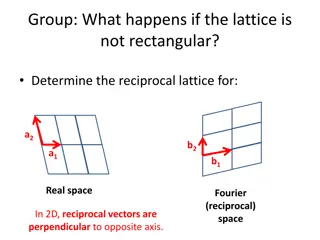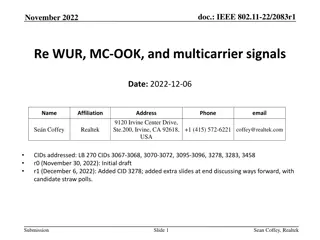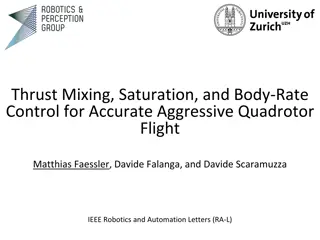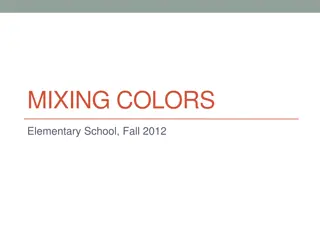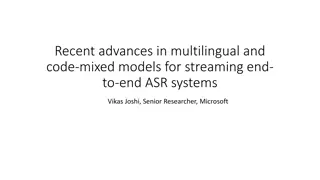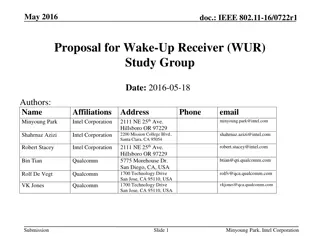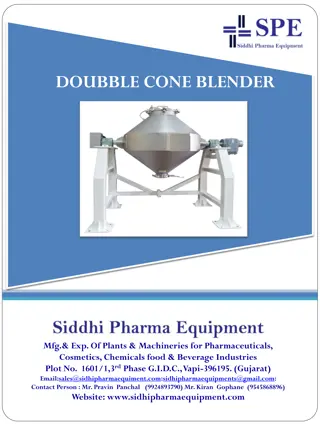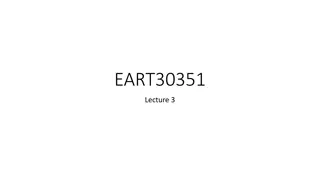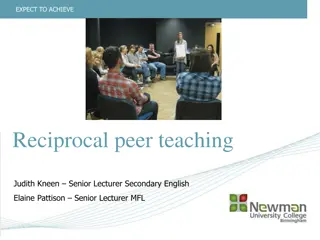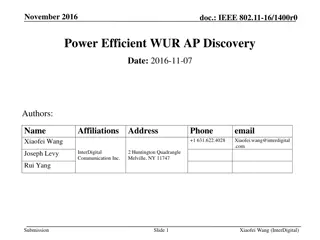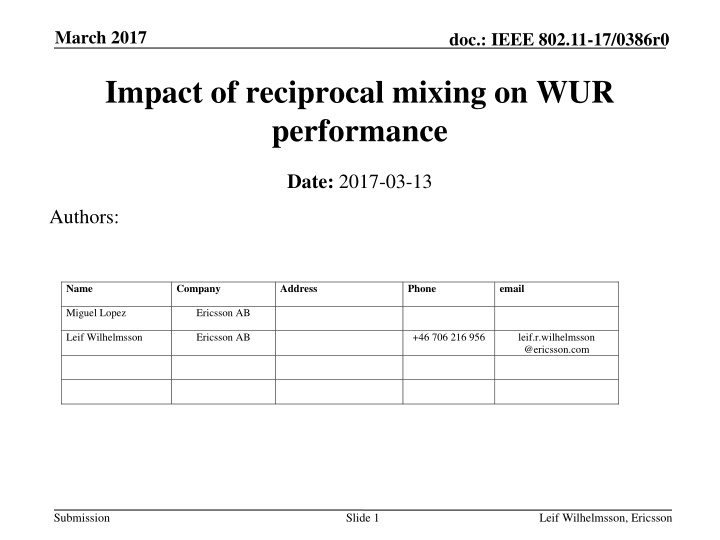
Impact of Reciprocal Mixing on WUR Performance Analysis
Explore the impact of reciprocal mixing on Wake-Up Radio (WUR) performance through a simple analytical model. Discover how noisy oscillators can lead to performance degradation and learn about the trade-off between power consumption and phase noise power in oscillators. Gain insights into modeling reciprocal mixing and its potential effects on WUR performance in the presence of strong adjacent interferers.
Download Presentation

Please find below an Image/Link to download the presentation.
The content on the website is provided AS IS for your information and personal use only. It may not be sold, licensed, or shared on other websites without obtaining consent from the author. If you encounter any issues during the download, it is possible that the publisher has removed the file from their server.
You are allowed to download the files provided on this website for personal or commercial use, subject to the condition that they are used lawfully. All files are the property of their respective owners.
The content on the website is provided AS IS for your information and personal use only. It may not be sold, licensed, or shared on other websites without obtaining consent from the author.
E N D
Presentation Transcript
March 2017 doc.: IEEE 802.11-17/0386r0 Impact of reciprocal mixing on WUR performance Date: 2017-03-13 Authors: Name Company Address Phone email Miguel Lopez Ericsson AB Leif Wilhelmsson Ericsson AB +46 706 216 956 leif.r.wilhelmsson @ericsson.com Submission Slide 1 Leif Wilhelmsson, Ericsson
March 2017 doc.: IEEE 802.11-17/0386r0 Abstract The importance of modeling the trade-off between power consumption and phase noise power was highlighted in [1] Noisy oscillators may cause WUR performance degradations due to reciprocal mixing This presentation introduces a simple analytical model to evaluate the impact of reciprocal mixing on WUR performance Submission Slide 2 Leif Wilhelmsson, Ericsson
March 2017 doc.: IEEE 802.11-17/0386r0 Outline Recap of proposed phase noise models [1] Degradation due reciprocal mixing Modeling reciprocal mixing Simple model to evaluate the impact of reciprocal mixing on WUR performance Numerical examples Conclusions Submission Slide 3 Leif Wilhelmsson, Ericsson
March 2017 doc.: IEEE 802.11-17/0386r0 Recap The phase noise (PN) model should take into account power consumption [1] There is a trade-off: Lowering the power consumption in the LO increases the PN power [1] For very low power oscillators, reciprocal mixing (RM) may be non-negligible RM may potentially degrade the WUR performance whenever a strong adjacent interferer is present Submission Slide 4 Leif Wilhelmsson, Ericsson
March 2017 doc.: IEEE 802.11-17/0386r0 Impact of RM The problem caused by RM is illustrated in the following figure passband fLO fadj dfadj fIF x BPF BPF Dfadj fLO fadj ~ LO L(Df) Df fLO fadj Submission Slide 5 Leif Wilhelmsson, Ericsson
March 2017 doc.: IEEE 802.11-17/0386r0 Modeling RM A simple analytical model is obtained by assuming that the phase noise consists of a single spur with a power calculated by integrating the PSD of the PN over the bandwidth of the adjacent channel dfadj fIF x BPF Dfadj fLO fadj ~ LO dfadj L(Df) L(Df) fLO fLO fadj fadj Submission Slide 6 Leif Wilhelmsson, Ericsson
March 2017 doc.: IEEE 802.11-17/0386r0 Modeling RM At frequency offsets of the order of the channel separation (e.g. 25 MHz), the PSD ? of PN may be approximated [1] by ? ?? =7.33?? 2, where ??? ?? ???? ????: minimum power dissipation ???: LO frequency ??: offset frequency ?: Boltzmann constant ?: temperature Assuming the adjacent channel bandwidth to be ????? [Hz] and the channel separation ????[Hz], the PN power over the adjacent channel is ????+????? 2 ? ?????=7.33????? ???? 2 1 1 ???= ???? ????? ????+????? ???? ????? 2 2 2 Submission Slide 7 Leif Wilhelmsson, Ericsson
March 2017 doc.: IEEE 802.11-17/0386r0 Numerical examples Use the following parameters [1] ????: 75?? ???: 2.437 ??? ?: 1.38 10 23?? 1 ?: 291 ? In addition ????: 25 ??? (channel separation) ?????: 18 ??? (approx. channel bandwidth) The expression in slide 7 yields ???= 41 ??? For ????: 2???, we instead obtain ???= 35.5 ??? Submission Slide 8 Leif Wilhelmsson, Ericsson
March 2017 doc.: IEEE 802.11-17/0386r0 Evaluating impact of RM The interference caused by RM can now be approximated as ? ? = ??? ??? ???? ??? ??? Where ? = C/I at the WUR detector ??? ??? ? ??????? = C/I at the antenna This is conservative and simplified. The BPF would e.g. typically be < 20 MHz, reducing the RM interference Submission Slide 9 Leif Wilhelmsson, Ericsson
March 2017 doc.: IEEE 802.11-17/0386r0 Numerical example ???= 35.5 ??? ? = -16 dB (from IEEE 802.11-2012, BPSK, r = ) ??????? ? ? = ???= 16 35.5 = 19.5?? ??? ???? ??? ??? If the requirement for C/I would be set the same as for the most robust MCS, reciprocal mixing will not be an issue The C/I simulated in [2] is 15-20 dB lower than what results from reciprocal mixing Submission Slide 10 Leif Wilhelmsson, Ericsson
March 2017 doc.: IEEE 802.11-17/0386r0 Discussion With a WUR sensitivity similar to MCS0, it seems to make sense to require also similar ACI performance If this is assumed, reciprocal mixing will not be an issue. (Essentially, other problems will appear earlier) Normally phase noise is important to include when coherent reception is used, and in particular when operating at high SNR. If OOK is used this does not seem necessary We believe is it not necessary to include phase noise for performance evaluation Submission Slide 11 Leif Wilhelmsson, Ericsson
March 2017 doc.: IEEE 802.11-17/0386r0 Straw Poll Do you agree with the use of the model in slides 7-8 (with possible correction factors to include e.g. BW of filters before the detector ) to evaluate the impact of reciprocal mixing on WUR? Y/N/A: X/Y/Z Submission Slide 12 Leif Wilhelmsson, Ericsson
March 2017 doc.: IEEE 802.11-17/0386r0 References 1. M. Park et al., WUR Phase Noise Model Study, IEEE 802.11- 17/0026r0. L. Wilhelmsson and M. Lopez, Concurrent transmission of data and a wake-up signal in 802.11ax , IEEE 802.11-17/0094r1. 2. Submission Slide 13 Leif Wilhelmsson, Ericsson

